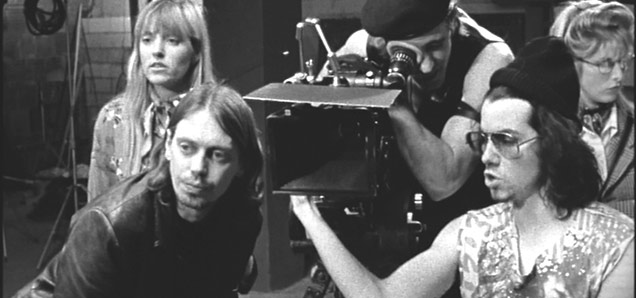Reel Life: Movies about movies - reloaded
 CREDIT: SONY PICTURES CLASSICS
CREDIT: SONY PICTURES CLASSICSSteve Buscemi's performance is a hidden gem in the low-budget 1995 film Living in Oblivion.
Any film that self-examines is always a fun watch. From revealing inside jokes within the film industry to gaining a better look at the filmmaking process, movies going meta always makes for an interesting watch. Some more interesting picks about the state of the industry include:
Singin’ in the Rain (1952)
Best remembered for Gene Kelley’s singing and dance routine. In the rain. Or for the infamously horrifying take on it by Alex DeLarge in A Clockwork Orange – Singin’ in the Rain is a pop-culture staple that most people have no further knowledge of besides its most iconic moments. Singin’ in the Rain is in fact a period piece, the story of Hollywood’s mass transition from the silent era to the talkies, movies with synchronized sound. The difficulties, the struggles and especially the hilarious confusion faced by actors and filmmakers who had a rudimentary understanding of a microphone is all captured in this ‘50s musical comedy.
Living In Oblivion (1995)
Living In Oblivion gets points for being almost double-meta. A low-budget independent film about the making of a low-budget independent film, this movie, one of Steve Buscemi’s lesser-known work, but nevertheless best performances, is surreal, funny and tragic. Written and directed by filmmaker Tom DiCillo, it’s based on his own struggles in the movie business. As such, it is incredibly introspective on what goes on in the minds of creative types who want ever so badly to translate the images in their head onto celluloid.
Day for Night (1972)
The fact that this movie isn’t in English may scare some away, but believe me when I say François Truffaut’s Day for Night is accessible and worth watching. Moving away from the Hollywood setting, the movie chronicles the increasingly disastrous production of a fictional French movie, Je vous présente Paméla. The constant drama between the prima donnas of the fictional production captures the essence of working with some of the bigger names in the business.
Sunset Boulevard (1950)
Receiving accolade after accolade at the time of its release, Sunset Boulevard is less about the process of making a film and more about the personal lives and struggles of the people behind them. It’s the story of a young screenwriter’s life intertwined with the depressive, alcoholic cloud of a faded former movie star waiting to make her comeback. The characters in Sunset Boulevard are analogues and composites of various real-life filmmakers and stars of early and golden-age Hollywood, making this film a near-historical insight of the period.













